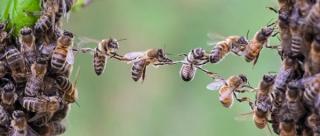
Managing the issues of ageing plant in the process industries
- Post Date
- 19 May 2022
- Author
- John Hanna
- Read Time
- 3 minutes

Plant ageing leading to an increased risk of loss of containment has been shown to be an important factor in incidents and accidents across the chemical industries over the years.
It’s not surprising then that the UK regulatory authorities view asset integrity management as a cornerstone for continued safe operation and a hot topic for inspection on COMAH sites. The COMAH Competent Authority expects duty holders to be able to demonstrate that ageing mechanisms have been identified, are understood and are being managed effectively.
But even so, recent surveys have shown that over 60% of COMAH sites still have room for improvement.
What do we mean by ageing?
Ageing refers to the condition of plant or equipment where it suffers some form of material deterioration and damage, with an increasing likelihood of failure over its lifetime. Deterioration and damage relate to the potential effect on the equipment’s functionality, availability, reliability and safety. This is usually, but not necessarily, associated with time in service.
There are many examples of very old plant remaining fully fit for purpose, and of recent plant showing accelerated or early ageing, e.g. due to corrosion, fatigue or erosion failures.
The characteristics of an ageing asset have been defined by the HSE as when:
- Damage due to degradation has accumulated and may have become widespread and be accelerating
- Design or performance margins may have eroded to a point where future acceptable performance cannot be assumed
- A different, more quantitative, approach to inspection and non-destructive testing may be necessary for determining the extent and rate of damage to demonstrate fitness for service
- Proactive ageing management and asset care is required through revalidation, major repairs, refurbishment and replacement of key items at various times
Why is ageing plant so important and how can you manage it?
An effective asset integrity management programme will not only help to improve process safety performance and maintain compliance with regulatory requirements, it will lead to:
- Improved return on investment by extending asset life
- Improved operational performance
- Reduced financial losses
- Better informed asset investment decisions
- Enhanced reputation through improved stakeholder awareness and confidence
The main activities involved in managing ageing plant risks are those relating to:
- Hazard identification and risk assessment
- Registration of safety-critical plant and equipment
- Assessment of degradation mechanisms
- Inspection, testing and planned maintenance of safety-critical plant
- Testing and calibration of safety-related EC&I equipment
- Management of change
As well as the physical ageing process, other factors also need to be given careful consideration. Competency, availability and organisation of the employees responsible for asset management and knowledge management are also essential to ensuring that an understanding of current and predicted asset condition is used when making asset management decisions.
There is no one size fits all approach as every business is different and therefore the risks will differ. We can help you to identify safety-critical plant and equipment, assess the potential for ageing, and develop strategies for on-going inspection, testing and preventative maintenance. For more information please contact us.

